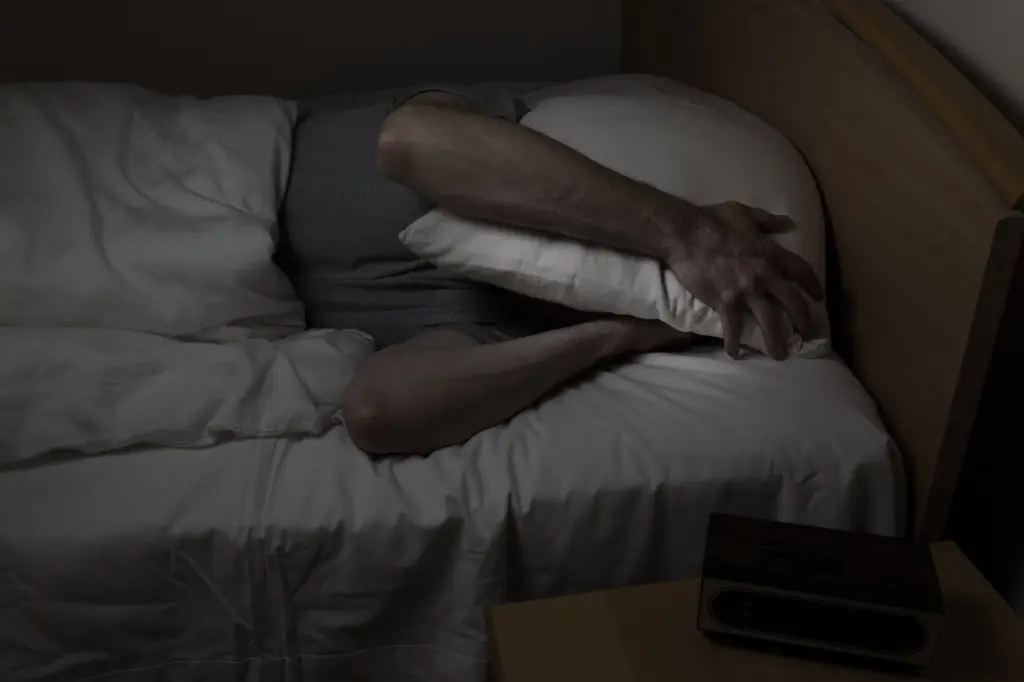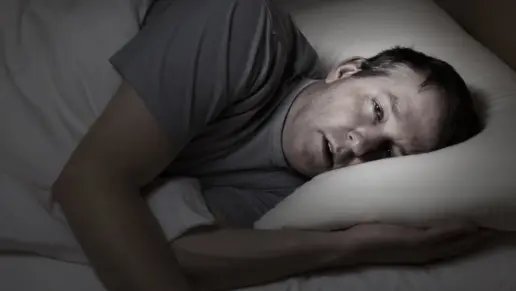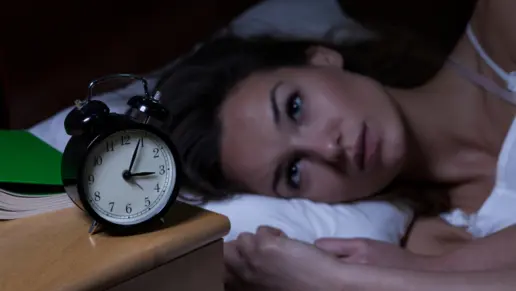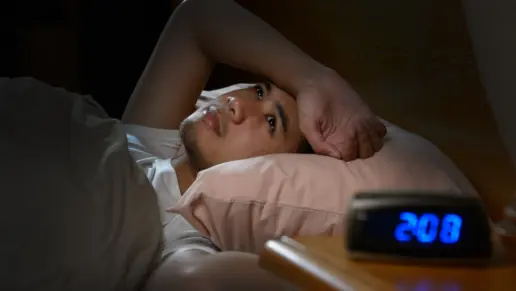If you’re facing sleep challenges, it’s important to understand your options for treatment. Lunesta is a medication that is commonly prescribed to address issues like insomnia. Whether this prescription is best for your situation can be determined by taking a closer look at what this drug is, its benefits and its side effects.
What is Lunesta (Eszopiclone)?
Lunesta, or the generic version, eszopiclone, is a sedative, also known as a hypnotic medication that is used to treat sleep problems like insomnia. Lunesta is prescribed when people have trouble falling asleep and staying asleep.
Lunesta is classified as a non-benzodiazepine, sedative-hypnotic. Eszopiclone is considered to be safer than benzodiazepines because of a lower risk for dependence and abuse.
How Eszopiclone Works
Lunesta enhances the effects of GABA in the brain by slowing down activity and promoting sleep. GABA is gamma-aminobutyric acid. It is a critical inhibitory neurotransmitter.
This means it quiets nerve cells and produces a calming effect on the nervous system. It helps regulate stress hormones, anxiety, sleep and blood pressure. This is why Lunesta is especially helpful for people who have trouble falling asleep because their mind is racing.
Lunesta FAQs
There is no difference in the chemical makeup of Lunesta and the Lunesta generic eszopiclone; however, cost and dosage may vary depending on the manufacturer.
While Lunesta and Ambien belong to the same class of sedative-hypnotics, they are different in several ways. Lunesta has a longer half-life (six hours) and therefore lasts longer in the body. This may make the morning-after drowsiness more difficult to recover from. Lunesta is also said to have a bitter, metallic aftertaste.
Lunesta is approved for long-term use while Ambien is prescribed for short-term use (two to four weeks). Because Ambien has a faster onset and produces euphoria, it is considered to have a higher potential for abuse. Ambien works faster to help people fall asleep, but Lunesta is reported to help people stay asleep longer.
Both medications are highly dangerous if used with alcohol. Both Lunesta and Ambien should never be taken during waking hours as they cause significant impairment in functioning. People should never drive while taking either Lunesta or Ambien until they are sure the aftereffects have worn off.
Yes, Lunesta is a controlled Schedule IV substance and can only be prescribed by a medical provider. It has the potential for abuse, addiction and overdose death.
Common side effects include feeling drowsy in the morning, a metallic aftertaste and sleepwalking behaviors.
Using Lunesta with Counseling and Therapy
Lunesta is sometimes used in conjunction with counseling and therapy to help people who have anxiety due to stress because of the effects of GABA in the brain. Anxiety often causes sleep disruption, and better sleep reduces the production of stress hormones in the brain.

Research has also indicated that persons who participated in cognitive behavioral therapy (CBT) along with taking Lunesta healed faster after hospitalization. A good night’s sleep is associated with faster healing.
Lunesta was also found effective for treatment in menopausal women for hot flashes. Because hot flashes often happen at night, women reported fewer wakings from the discomfort.
In substance use recovery, many people need help regulating day and night schedules after using substances.
Especially when a person has been mixing stimulants and depressants such as cocaine and alcohol, brain chemistry can become confused and require assistance to balance out. Lunesta can help the brain begin producing the proper neurotransmitters at the right times for sleep and wake cycles to return to normal.
Lunesta Dosage, Safety and Side Effects
Lunesta comes in 1 mg, 2 mg and 3 mg dosages. Strength of dosage is determined by the medical provider according to symptoms, size of patient and other co-occurring conditions that could interact.
It is important that the prescribing medical practitioner knows about all herbal supplements, antifungal or other medications that the person is taking that may interact with Lunesta.
Mild Lunesta side effects most commonly reported are having a daytime “hangover” sense of drowsiness. Dizziness, headache and cold-like symptoms like a stuffy nose and feeling run down are also common Lunesta side effects.
More serious eszopiclone side effects are when people get up in the middle of the night and do things they don’t remember. Some report driving, having telephone conversations, going shopping at all-night convenience stores and other types of activities they do not remember the next day.
Sleep-tweeting and sleep texting have also occurred. These and other kinds of sleepwalking behaviors are rare but are documented.
Some people have reported worsening of depression while taking Lunesta. Suicidal thoughts and self-harm behaviors can increase or occur for the first time. Agitation, aggression and anxiety are also noted as mood disruptions.
It is imperative to consult with a medical professional when taking sedative-hypnotic medications and antidepressants at the same time and report any significant mood changes that may present a danger to self or others.
Other eszopiclone side effects that may occur are allergic reactions presenting as swelling, itching or hives. Serious anaphylactic shock may need immediate medical attention.
Some patients, though very rare, reported hallucinations and paranoia. These symptoms stopped after ceasing the medication.
Is Lunesta a Controlled Substance? Understanding the Risks
Lunesta is a Schedule IV controlled substance which means there are specific rules around how it can be prescribed. Lunesta is not approved for people under the age of 18. It is also not recommended for those who are pregnant or nursing.
Lunesta should only be taken when a person is able to get a full seven to eight hours of sleep and when they are about to get into bed. It is recommended to take Lunesta on an empty stomach and not with meals.

Before using Lunesta, elderly patients should be assessed for fall risk. Breathing disorders are also concerns due to the potential for allergies. Liver disorders such as hepatitis can worsen with Lunesta and should be closely monitored to ascertain the ability of the liver to process the medication sufficiently.
Potential for Abuse
Lunesta may be a habit-forming medication and should only be taken as prescribed. If a person has a history of substance abuse, this should be considered by the prescribing physician as Lunesta has a risk for abuse, addiction and overdose.
Withdrawal symptoms may occur if a person has been using Lunesta for a long period of time and may require a slow taper when stopping the medication to avoid the discomfort of withdrawal.
People addicted to Lunesta may continue seeking the medication after the prescription has expired by engaging in high-risk or drug-seeking behaviors. They may take more than prescribed and put off stopping use after they no longer need it.
When quality of life deteriorates as a result of using Lunesta or if a person is craving or mixing Lunesta with other drugs, this may be an indication of a substance use disorder.
Treatment for Lunesta Addiction
Treatment for substance use disorder can be useful for persons who have become dependent or addicted to Lunesta.
Withdrawal and stabilization in a residential 30-day program is often the best way to start a recovery program. Continuing through a system of treatment that lasts between six months and a year provides a greater potential for a positive outcome in remaining abstinent from substances long term.
To find a treatment program that addresses eszopiclone addiction, search for facilities near you.
Featured Facilities Near You
Finding facilities near you…




